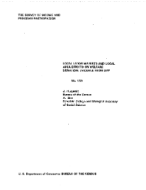Local Labor Markets and Local Area Effects on Welfare Duration
Local Labor Markets and Local Area Effects on Welfare Duration
Policy makers have long been concerned with the causes and consequences of welfare program use. In the last few years the debate has been put in terms of whether welfare programs lead to dependency. A number of studies have investigated the dynamics of welfare use. Using longitudinal data on individuals and hazard models, researchers have sought to understand why some persons or groups experience longer spells of welfare receipt than others. Policy variables such as benefit levels are generally found to have small to moderate effects on durations, and measures of labor market conditions, such as unemployment rates, are generally found to have small or mixed effects. A problem with previous studies is that they do not adequately account for local labor market conditions or other local area effects. This emission likely biases the estimated effects of policy and labor market variables. This paper incorporates relevant labor market area and other local area information in the estimation of welfare duration models using data from the Survey of Income and Program Participation (SIPP). We ask how these characteristics affect welfare spell duration, and how their inclusion affects the impacts of other policy variables.
Others in Series
Working Paper
Working Paper
Working Paper




